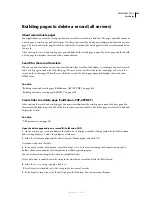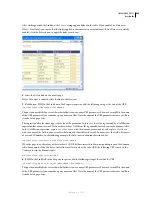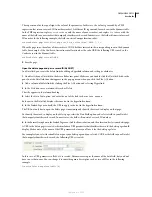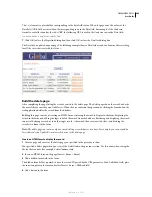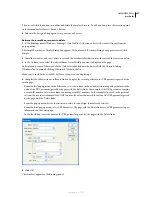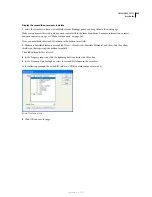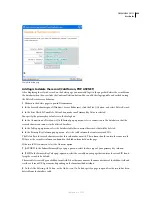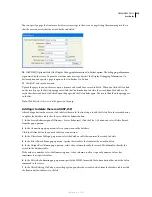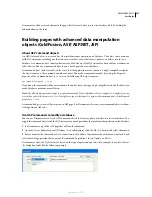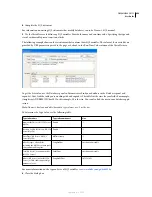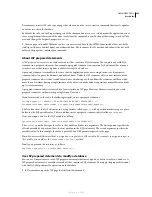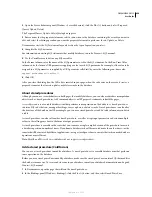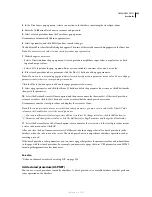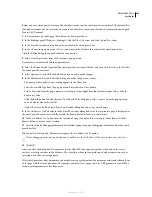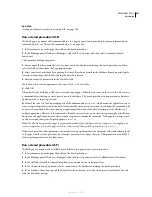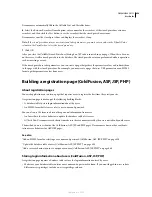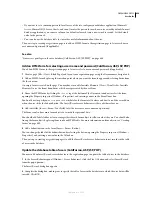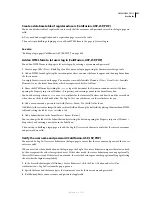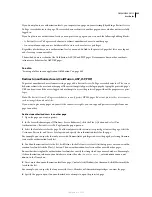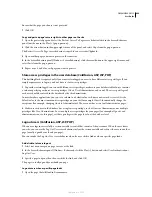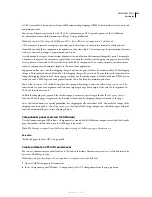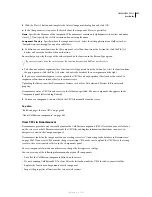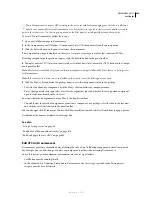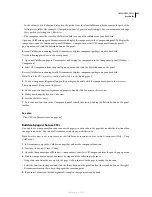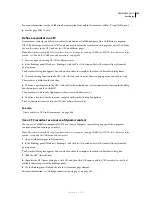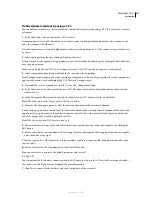
DREAMWEAVER CS3
User Guide
656
Before you use a stored procedure to modify a database, make sure the stored procedure contains SQL that modifies
the database in some way. To create and store one in your database, consult your database documentation and a good
Transact-SQL manual.
1
In Dreamweaver, open the page that will run the stored procedure.
2
In the Bindings panel (Window > Bindings), click the Plus (+) button, and select Stored Procedure.
3
In the Stored Procedures dialog box, enter a name for the stored procedure.
4
In the Connection pop-up menu, select a connection to the database that contains the stored procedure.
Click the Define button if you need to define a connection.
5
Select a stored procedure from the Procedures pop-up menu.
Dreamweaver automatically fills in any parameters.
6
Select the Returns DataSet option if the stored procedure returns a DataSet, and then click Test to see the DataSet
the stored procedure returns.
7
Select a parameter, and click the Edit button if you need to make changes.
8
In the Edit Stored Procedure Variable dialog box, make changes as necessary:
•
The name of the variable you are editing appears in the Name box.
•
Select the variable type from the pop-up menu. Enter the size of the variable.
•
Select a direction from the pop-up menu. A stored procedure might have input values, output values, or both.
•
Enter a test value.
•
Click the Build button to build the value. In the Build Value dialog box, select a source from the pop-up menu,
enter a default value, and click OK.
•
Click OK to close the Edit Stored Procedure Variable dialog box and accept your changes.
9
In the On Success, Go To box back in the Stored Procedure dialog box, enter the location of a page to display after
the stored procedure runs successfully or click the Browse button to browse to the location.
10
In the On Failure, Go To box, enter the location of a page to display if the stored procedure fails or click the
Browse button to browse to the location.
11
Select the Display Debugging Information On Failure option if you want debugging information when the stored
procedure fails.
When you select this option, Dreamweaver ignores the On Failure, Go To option.
Use the debugging option during development, and then use the On Failure, Go To option when your site is live.
12
Click OK.
After you close the dialog box, Dreamweaver inserts ASP.NET code in your page that, when run on the server,
executes a stored procedure in the database. The stored procedure in turn performs a database operation, such as
inserting a record or executing a query.
If the stored procedure takes parameters, you might create a page that gathers the parameter values and submits them
to the page with the stored procedure. For example, you may create a page that uses URL parameters or an HTML
form to gather parameter values from users.
September 4, 2007


